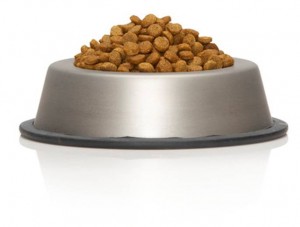 You may be reading the headline and thinking…duh, I know how to feed my dog. I put down the bowl, he eats it. I think we’ve got our system worked out pretty well.
You may be reading the headline and thinking…duh, I know how to feed my dog. I put down the bowl, he eats it. I think we’ve got our system worked out pretty well.
What I’m mostly referring to here are the two ways to feed a dog; free feeding or scheduled feeding.
Free feeding is when you leave food out all day. The dog is free to eat when he or she wants.
Scheduled feeding is when you put down the dog’s food dish for a determined period of time whether or not the dog eats it.
You want to schedule feed, free feeding is a bad idea. Let me tell you why…
Health reasons
When food is left out all day lots of dogs become ‘grazers’. They’ll eat a bit here or there, never sitting down to a full meal. Dogs weren’t meant to be grazers. Herbivores were meant to graze. That’s why you see cows, rabbits, horses, etc. grazing throughout the day.
Dogs are most carnivorous. Carnivores were meant to eat a big meal and then it digests over a certain period of time. That is how their body is set up and that is the best way for their metabolism to work.
Not only that, lots of dogs get too skinny when they are free fed. You would think it would be the opposite, that a dog would overeat when free fed. What happens, though, is that the food is always there. As a plentiful and not scarce resource the dog gives food a much lesser meaning and holds it with less import. Nearly every time when I’ve seen a dog that is too skinny that dog has been free fed.
Relationship reasons
It’s important for your dog to know that food comes from you. You are the giver of food. You control this all important resource. By placing down his bowl and then collecting it 10 or 15 minutes later you send a subtle signal to your dog that you are in charge.
For those of you who are currently being held hostage by your dog let me tell you, being in charge of your dog is a good thing. Scheduled feeding is just one way of communicating that to the dog.
House training reasons
Does your dog have any house training issues? Dogs are FAR easier to house train when they are schedule fed versus free fed. If you know when your dog is eating you start to know when your dog needs to go out. If your dog is eating whenever and however much he or she feels like you’ll find that it is much more difficult to housebreak your dog.
Moral of the story, scheduled feeding is so much more valuable for a variety of reasons.




Follow Us!
By FRESHCIGSUK e cigarette